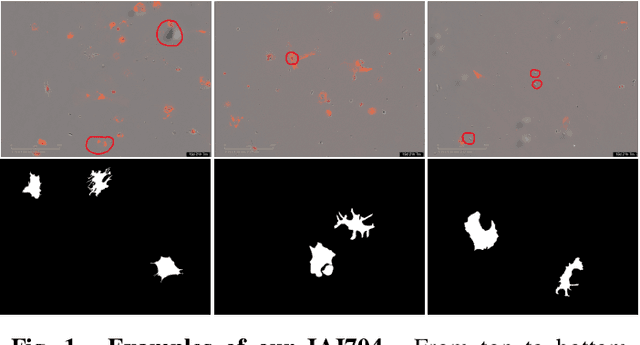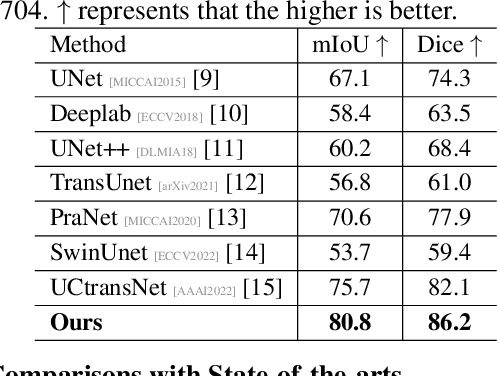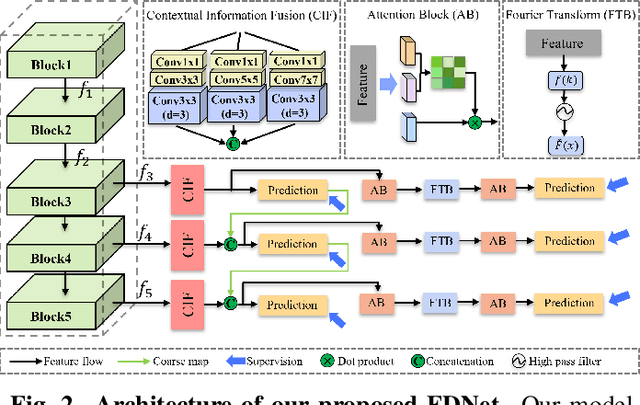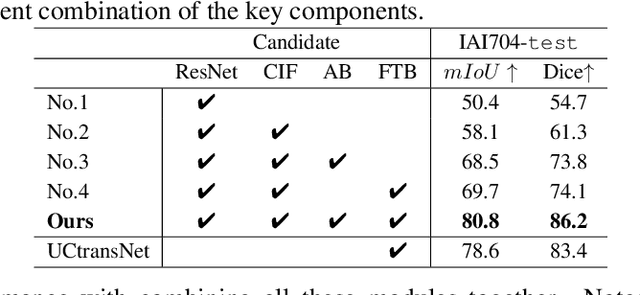Jiahua Shi
Vox-UDA: Voxel-wise Unsupervised Domain Adaptation for Cryo-Electron Subtomogram Segmentation with Denoised Pseudo Labeling
Jun 25, 2024Abstract:Cryo-Electron Tomography (cryo-ET) is a 3D imaging technology facilitating the study of macromolecular structures at near-atomic resolution. Recent volumetric segmentation approaches on cryo-ET images have drawn widespread interest in biological sector. However, existing methods heavily rely on manually labeled data, which requires highly professional skills, thereby hindering the adoption of fully-supervised approaches for cryo-ET images. Some unsupervised domain adaptation (UDA) approaches have been designed to enhance the segmentation network performance using unlabeled data. However, applying these methods directly to cryo-ET images segmentation tasks remains challenging due to two main issues: 1) the source data, usually obtained through simulation, contain a certain level of noise, while the target data, directly collected from raw-data from real-world scenario, have unpredictable noise levels. 2) the source data used for training typically consists of known macromoleculars, while the target domain data are often unknown, causing the model's segmenter to be biased towards these known macromolecules, leading to a domain shift problem. To address these challenges, in this work, we introduce the first voxel-wise unsupervised domain adaptation approach, termed Vox-UDA, specifically for cryo-ET subtomogram segmentation. Vox-UDA incorporates a noise generation module to simulate target-like noises in the source dataset for cross-noise level adaptation. Additionally, we propose a denoised pseudo-labeling strategy based on improved Bilateral Filter to alleviate the domain shift problem. Experimental results on both simulated and real cryo-ET subtomogram datasets demonstrate the superiority of our proposed approach compared to state-of-the-art UDA methods.
FDNet: Frequency Domain Denoising Network For Cell Segmentation in Astrocytes Derived From Induced Pluripotent Stem Cells
Feb 05, 2024



Abstract:Artificially generated induced pluripotent stem cells (iPSCs) from somatic cells play an important role for disease modeling and drug screening of neurodegenerative diseases. Astrocytes differentiated from iPSCs are important targets to investigate neuronal metabolism. The astrocyte differentiation progress can be monitored through the variations of morphology observed from microscopy images at different differentiation stages, then determined by molecular biology techniques upon maturation. However, the astrocytes usually ``perfectly'' blend into the background and some of them are covered by interference information (i.e., dead cells, media sediments, and cell debris), which makes astrocytes difficult to observe. Due to the lack of annotated datasets, the existing state-of-the-art deep learning approaches cannot be used to address this issue. In this paper, we introduce a new task named astrocyte segmentation with a novel dataset, called IAI704, which contains 704 images and their corresponding pixel-level annotation masks. Moreover, a novel frequency domain denoising network, named FDNet, is proposed for astrocyte segmentation. In detail, our FDNet consists of a contextual information fusion module (CIF), an attention block (AB), and a Fourier transform block (FTB). CIF and AB fuse multi-scale feature embeddings to localize the astrocytes. FTB transforms feature embeddings into the frequency domain and conducts a high-pass filter to eliminate interference information. Experimental results demonstrate the superiority of our proposed FDNet over the state-of-the-art substitutes in astrocyte segmentation, shedding insights for iPSC differentiation progress prediction.
 Add to Chrome
Add to Chrome Add to Firefox
Add to Firefox Add to Edge
Add to Edge